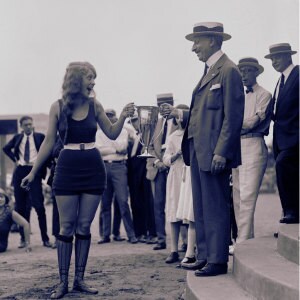The history of pocket squares traces back to ancient times, although the concept has evolved over the centuries. Ancient Egyptians, Greeks, and Romans carried small pieces of cloth, often perfumed, to keep themselves clean and to offer as gifts or symbols of wealth. During the Renaissance period in Europe, handkerchiefs became more fashionable and served both practical and decorative purposes. Men and women carried intricately embroidered pocket squares made of fabrics like linen or silk. These were often scented and displayed as status symbols. As fashion evolved, pocket squares became popular among European nobility and aristocracy. Worn by men to adorn their suit pockets and were typically made from luxurious fabrics like silk or lace, pocket squares were often monogrammed or embroidered with intricate designs.
In the early 20th century, pocket squares became more accessible to the general public as fashion trends spread. Men started using them to complement their suits or formal attire. The pocket square was typically folded into various shapes, such as a square, triangle, or puff, and placed in the breast pocket. Pocket squares experienced a decline in popularity during the mid-20th century as more casual fashion styles emerged. However, they remained a staple in formal wear, particularly for special occasions and black-tie events.
Today, the interest in pocket squares as a stylish accessory has resurged. Men have embraced them to add flair, personality, and a pop of color to their outfits. Pocket squares come in many colors, patterns, and fabrics, allowing endless possibilities in coordinating with suits and shirts. Pocket squares are considered a classic and timeless accessory in men's fashion and offer an opportunity for self-expression and personal style, showcasing individuality and attention to detail. Whether folded neatly, casually stuffed, or artfully arranged, pocket squares are an elegant and versatile accessory for men's formal and semi-formal attire.

